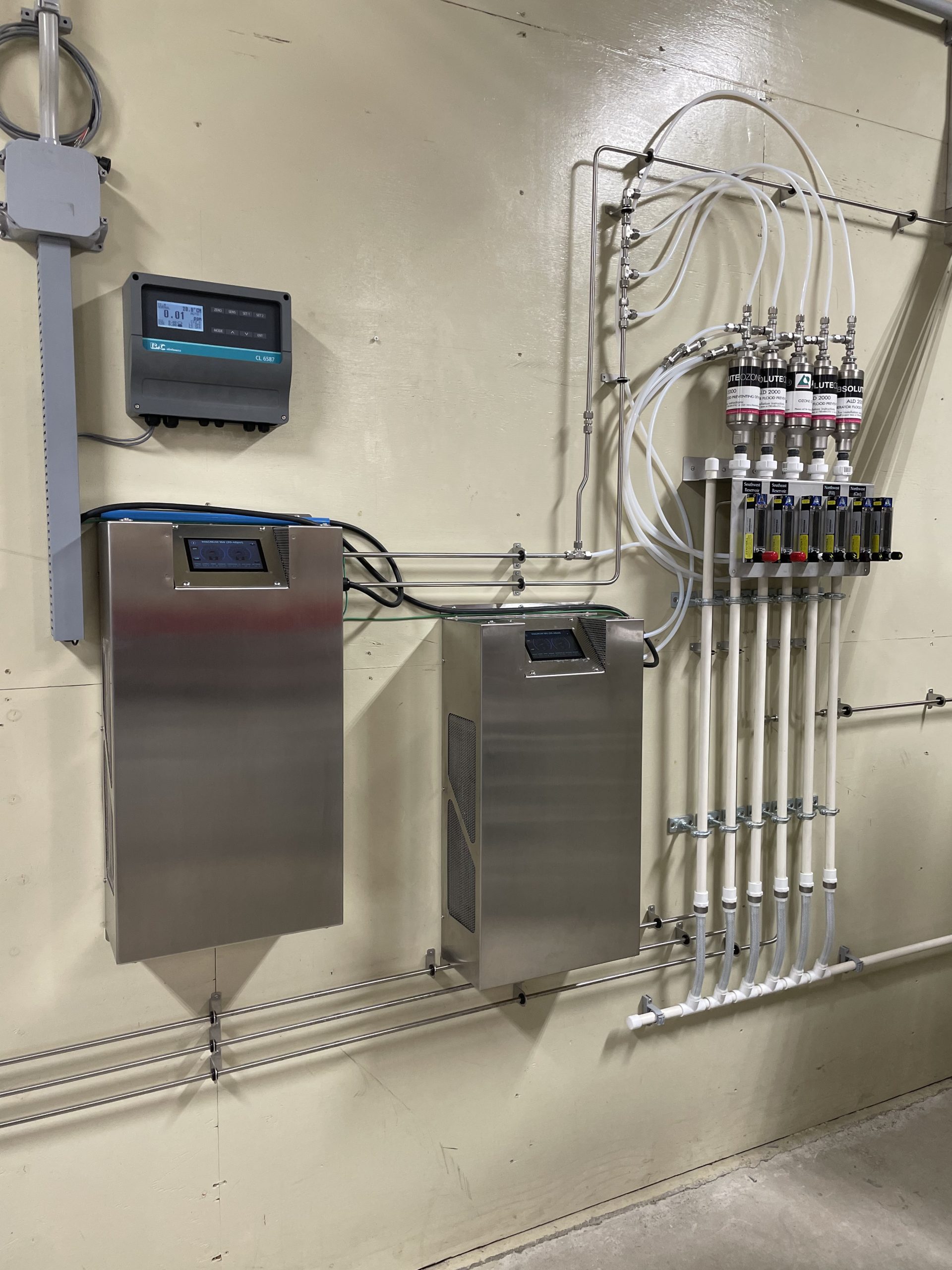INSPIRED BY DIFFERENCE.
Here is something that is going to shock you a bit. A while ago, I received a call from Bob, an engineer responsible for water treatment and disinfection at a large industrial plant. He was horrified, as he just purchased two 60 g/h ozone generators for $15,000 from an ozone generator manufacturer and they did not perform as they were advertised.
He had done everything he was advised to do by the manufacturer’s specialist, but after running his ozone system for more than an hour, he was absolutely confounded by the disturbing fact that he had only 18 grams of ozone dissolved in water out of 120 grams produced.
I told Bob, that it is not his fault and there is nothing wrong with his system. The problem was in fact his ozone generators, which were producing a respectful amount of ozone but at an extremely low ozone concentration level that was not suitable for water treatment.
I had explained to Bob the connection between ozone concentration and the amount of dissolved ozone in water. We had replaced his two 60 g/h low concentration ozone generators with one high concentration 30 g/h generator, following my advice, which in conclusion illustrated the point effectively. His system had successfully dissolved 24 g of ozone into the water – 4 times more ozone for a quarter of the price!
Ozone concentration is the key to dissolving ozone in water, but nobody wants to talk about it…
Why do they not want you to know…?
Because most of the air-cooled generators on the market produce ozone at concentrations of 1%-3% by weight. The truth is that at these concentrations it is almost impossible to dissolve any reasonable amount of ozone in water.
In most applications, only 5-20% of ozone produced is being dissolved (or even less) and that would mean that 80-95% of ozone will off-gas. You would have to destroy the off-gassed ozone which would translate into you losing the money you had used to produce this ozone. Because even a 3 wt% ozone generator in comparison to a 6-10 wt% requires 2-3 times more oxygen to produce the same amount of ozone and dissolves considerably less ozone into the water.
As an example, a 30 g/h ozone generator at 3 wt% concentration will dissolve about 10g/h in water and will require 12.5 SLPM (standard liters of oxygen per minute).
A generator producing 30 g/h at 10 wt% will dissolve about 25 g/h and will require only 4.0 SLPM of oxygen.
Simply put, it means that if you buy an ozone generator that delivers only 3-wt% concentration or lower, it will cost you 2 or even 3 times more than it would if you would use an ozone generator producing 6-10 wt%.
Here is an example of an ozone system cost comparison, low ozone concentration vs. high ozone concentration:

If you want to start saving your money now, please select the right ozone generator for your water treatment application.
The world’s largest ozone manufacturing companies advertise their ozone generators through phrases like:
“All our ozone generators are capable of producing ozone with concentrations of up to 14 percent by weight (wt%) using oxygen”;
“High concentration ozone generation maximizes efficiency and lowers operational costs”
“High ozone concentration is vital to high levels of dissolved ozone”.
Most of the people involved in manufacturing and procurement of successful large ozone systems understand that it is simply way too expensive and inefficient to use low concentration ozone generators, as in many cases hundreds of thousands of dollars will be wasted. However, most of the people acquiring small or medium size ozone systems are at the mercy of information given to them by salespeople, as they are really not truly familiar with ozone technology.
Unfortunately, most of the salespeople and manufacturer’s representatives often are more interested in selling the equipment than providing the most efficient and economical solutions to their clients. Most of the time realize that if customers will understand ozone technology, they will not be able to sell their mediocre performing inefficient ozone generators
Unfortunately, more than 90% of air-cooled ozone generators sold in North America today, produce ozone concentrations less than 3% by weight.
And their manufacturers will recommend using an air-fed ozone generator for water treatment. An air-fed ozone generator system is less expensive and therefore you are more likely to purchase it. The other reason that the sales representatives will not inform you of is – once you install the system you will start noticing that it does not work as well as you expected it to and when you complain, they will recommend that you purchase additional equipment to fix the problem. You are now simply digging the hole even deeper and as a result, you will end up spending more money. Good for their business, but no positive outcome for you.
There is also the maintenance cost of air-fed ozone generators to consider. Before I proceed further on this topic, I would like to elaborate on a few essential facts regarding air-fed ozone generator maintenance.
Firstly, an important disadvantage of air-fed ozone generators is that the Nitrogen and humidity in the feed air create calcium-like deposits on the surface of the electrodes. Similar to a car, if you do not do preventative maintenance on the air-fed ozone generator after a while these deposits will diminish your ozone production by restricting heat transfer from the plasma in the ozone cell. Heat destroys ozone and therefore the higher the temperature inside the generator the more ozone will be destroyed by it.
This usually involves the time-consuming tasks of taking the ozone generator apart every few months, scraping deposits from the ozone generator electrodes, then putting it all back together, and replacing damaged gaskets and other parts along the way.
The bottom line is that, unless you are very wealthy and enjoy cleaning and fixing ozone generators, do not buy an air-fed ozone generator.
If you feel that you do not want to support mediocrity and wasteful technology with your money, choose the right equipment for your ozone application.
The first issue is that air contains only 21% of oxygen and it is, therefore, impossible to create high concentration ozone. Typically, a good air-fed ozone generator will not produce more than 1.5 wt% ozone concentration.
From the earlier explanation, you know that you will have a problem dissolving all of that low concentration ozone gas into the water causing most of it to “off-gas” dissipating into the surrounding air versus dissolving into the water. Since ozone is highly corrosive you will therefore have to ensure that proper precautions are taken to destroy this ozone before it goes into the air and causes harm. This can be accomplished using a proper ozone destruct unit. Interestingly, it is not uncommon that an air-fed ozone generator will produce half as much ozone as when it was first used after only 6 months of use.
To summarize, my sincere hope is that the above information will help you to select the correct ozone generator for your application, calculate the real operating cost of your ozone system, and to give you the background information you need to be able to ask for the right questions when speaking with a salesperson.
I am hoping that you will have many years of enjoyment from this wonderful ecologically clean treatment technology instead of many years of aggravations, troubles, disappointment, and lost money.
Should you desire to delve deeper into some of the points I have illustrated above, please feel free to contact me with your questions

I believe in a greater good for people in general and I am constantly working on providing the best solutions for the problems negatively impacting human lives and the environment.
From gas power stations to a made-in-Canada solution to the world’s clean environment – ozone.
